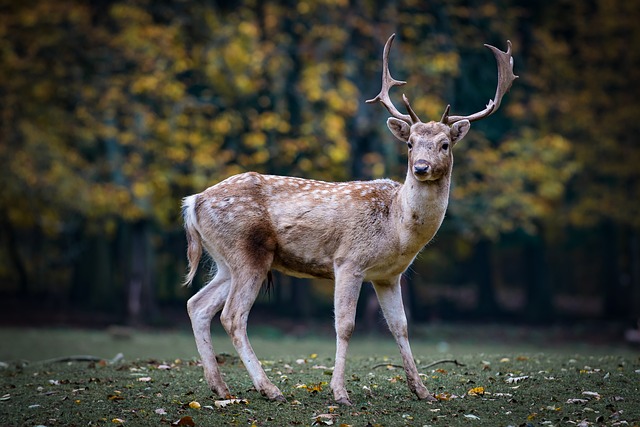
Deer hunting can be a thrilling activity that involves spending time in rural settings waiting for the opportunity to harvest a deer. Many hunters hone their skills season after season, using advanced techniques to tag their game. If you are just starting out as a new hunter, there’s no reason why you can’t be successful. However, it’s important to remember that hunting involves risk due to the nature of the sport.
Every state institutes and enforces its own set of laws and regulations that govern hunting activity. You will need to learn and carefully follow laws about when, what, where and how you can hunt. You will also need the right equipment. Whether you engage in rifle or bow hunting, you can enjoy this popular pastime safely and successfully with a bit of preparation.
Preparing to Hunt
Before you can begin hunting, you must learn the hunting regulations enforced in your local area. States generally have separate regulations in place for rifle and bow hunting, so the weapon you intend to use will determine which regulations you must follow. These regulations dictate specific dates on which you can hunt, areas where you can hunt, proximity to roads and homes, and the amount of orange clothing hunters must wear to be visible to others. You will also need to purchase a hunting license, which may require a specific number of hours of formal instruction. Formal instruction is usually a requirement because this ensures that hunters understand and follow safety guidelines.
Hunters often search for places to hunt prior to hunting. You may own your own property where you plan to hunt, or you might assess public or private lands in your area that could be ideal for hunting. Always check with a landowner before hunting on private land. Scout for deer prior to hunting. Scouting your hunting area involves visiting an area in the early morning or evening hours to note typical deer movement. You will need to get the right hunting gear, too. Typical hunting gear includes a weapon, ammunition, clothing, footwear, and a backpack. Hunters also use equipment such as two-way radios, headlamps, binoculars, a GPS, compass, flashlights, scent attractant, and scent blocker. In the event that you succeed in getting a deer, you will need deer tags, a deer drag, processing knives, and gutting gloves.
- Hunter Safety Basics
- Seven Hunter Safety Tips
- The Ten Commandments of Firearm Safety (PDF)
- Your Best Hunting Season
- Hunter Safety Tips
- Hunting Safety
- Safety Issues to Consider When Hunting
- Hunting Safety (video)
- Safety Harnesses Key to Prevent Falls While Deer Hunting
- Hunting Safety Tips (PDF)
- Deer Hunting Safety Tips (PDF)
Bow Hunting
Bow hunting for deer involves the use of a crossbow, compound bow, or composite bow. Before heading out to the woods and fields with a bow and arrows, a novice archer should practice with targets to hone their shooting skills. Bow hunting often involves shooting at difficult angles and positions with little time to position yourself for the shot. Learn and follow the bow hunting regulations in your state, and get the necessary training so you have the skills you need. Standard gear includes odor-eliminating spray, a range finder, pruning shears, gloves, and equipment for moving and dressing a deer if you manage to shoot one. Always observe safety guidelines for bow hunting, such as matching your arrows to your draw weight, using a covered quiver, and identifying your target animal clearly before you shoot.
- Tree Stands
- Up Your Odds of a Successful Bow Hunting Season (PDF)
- Today’s Bow Hunter (PDF)
- Learn to Hunt (PDF)
- Bow and Arrow Hunting Gear (PDF)
- The Elk Hunter’s Essential Gear List
- How to Choose Bow Accessories
- Archery Regulations
- Hunting Regulations: Deer Archery Season
- Bow Basics and How to Shoot (video)
- Beginner’s Guide to Compound Bows
Rifle Hunting
As with bow hunting, rifle hunters must adhere to all local laws and regulations, which includes possessing a license for your state. Your state likely requires specific training that each hunter must complete, which will also provide thorough safety guidelines that everyone should follow. A safety belt and harness will be crucial for climbing trees. General hunting equipment such as a knife, rope, flashlight, compass, outerwear, and rangefinder will also be helpful when rifle hunting.
- From Ammo to Camo: Ultimate Turkey Hunting Gear List
- Waterfowling Gear Maintenance Tips
- Complete Whitetail Hunting Gear Checklist for Hunters
- Deer Hunting Regulations: State of Ohio
- Wisconsin Hunting Regulations and Hours
- Iowa Hunting Regulations (PDF)
- Season and Bag Limits: State of Pennsylvania
- Choosing and Equipping Your First AR-15 Rifle
- Rifle Hunting: Suggested List of What to Bring (PDF)
- Recommended Rifle Season Equipment List (PDF)
- Rifle Lesson Plans (PDF)
 11 Home Security and Safety Tips
11 Home Security and Safety Tips  Staying Safe During a Home Power Outage
Staying Safe During a Home Power Outage  Best Cities for Sidewalks and Winter Safety
Best Cities for Sidewalks and Winter Safety  Home Motion Detectors Secure Your Safety
Home Motion Detectors Secure Your Safety  The Safe Haven of a Panic Room
The Safe Haven of a Panic Room 

Bow Hunting, Rifle Hunting etc are tricky and these is very resourceful content to get prepared .